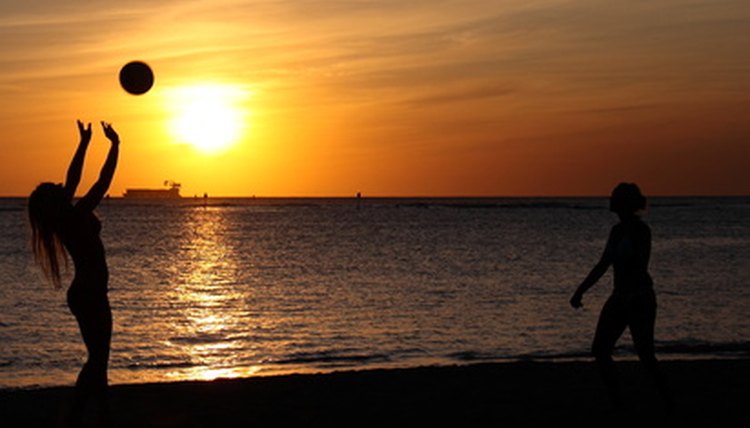Volleyball Rules for Setting

When it comes to offensive attacks in volleyball, a set becomes just as important as a spike. Providing a good set allows the hitter to properly weigh her options and create the best offensive attack possible. Setting may appear to be a flawless and easy task, but it is one of the most difficult skills to master, and as with any sport, rules for ball contact apply. These universal guidelines help setters properly keep the ball in play.
Fingertips
Setting is defined as an overhead pass, which is usually a team’s second contact with the ball, in which a player uses only her finger tips to touch the ball. The player uses the strength in her fingertips and wrists to catch and simultaneously push the ball to a designated area so that her teammate may spike the ball over the net. The sets can be high and on the outside or short and quick in the middle. Setters vary the types of sets in order to mix up the offense. However, no matter what type of set they choose, one of the most important rules for setting lies in the fact that only a setter’s fingertips touch the ball.
Double Contact
This becomes one of the most common calls that turn the ball over to the other team. Double contact happens when the setter hits the ball twice in succession. This usually happens when the timing is off and the player’s fingertips do not simultaneously push the ball up on contact. It may happen when the pass is too high or if the setter does not get under the ball and in position fast enough to properly execute a set.
Lift or Carry
A lift or carry occurs when the setter holds the ball for an extended period of time. Players set the ball in one smooth and fluid motion. If the ball momentarily rests in a player’s hand, the referee will usually call a lift. A referee will also call a lift or carry when a player’s palms, and not the fingertips, touch the ball in an effort to push it upward for a set. In more advanced level of competitions, referees may also call a lift violation if the player sets the ball below or at the chin, for example starting at the chest, instead of above the head. For beach or recreational volleyball, referee rulings on lifts or carries are often more lenient.
References
Writer Bio
Anel Laj began her professional writing career more than 10 years ago as a sports journalist for the Los Angeles Daily News. Currently, she is a freelance writer based in Los Angeles. Laj received her Bachelor of Arts in mass communications from UC Berkeley. She earned her Master's in Professional Writing from the University of Southern California.
